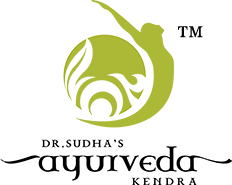
Migraine
In todays world we all encounter a situation where we struggle to maintain a balance between work and life. Many a times it so happens that concentrating on one affects the other leading to serious health implication. Frequently carrying work home, unable to leave office on time, skipping meals, less intake of water, less sleep has become normal routine of many people, especially women who have to shoulder various responsibilities after complaints of headaches and migraine.
Headache is a term which literally describes pain felt anywhere in the head. It poses certainly the commonest, probably the most ambiguous and sometimes the most difficult clinical problem.
Headache is caused by a disturbance of the pain sensitive structures in the head. The extracrainal coverings and arteries are sensitive to pain. Within the cranial cavity there are few pain sensitive structures. Pain can be evoked from the venous sinuses, the arteries and dura at the base of the brain. Displacement and distortion of these structures, particularly if rapid, cause headache.
Among the 12 cranial nerves, V, IX, X cranial nerves contain pain fibers and direct compression of these nerves produces pain.
Classification of headache:
I) Referred headache-Diseases of structures in the head may cause pain. For Example-Eye diseases, nasal and sinus diseases, dental diseases, ear diseases, cervical spondylosis
II) Cranial neuralgia- Trigeminal neuralgia, temporomandibular neuralgia
III) Meningeal irritation-Meningitis, Encephalitis
IV) Vascular headache- is almost always described as throbbing in character and is aggravated by head movements. Commonest form of vascular headache is. Migraine, cluster headache
V) Headache due to expanding intracranial lesions such as cerebral tumors, sub dural hematoma
VI) Psychogenic-These headaches are associated with anxiety and depression.
Migraine is a recurrent throbbing headache that characteristically affects one side of the head. It is possibly caused by constriction and then dilation of the arteries of the brain. An initial phase of vasoconstriction causes symptoms of less blood supply to the brain and this is followed by vasodilatation. This change affects both intra and extra cranial arteries and it is the dilation of extra cranial vessels which cause pain by stretching the pain nerve ending in the arterial wall.
There is a genetic predisposition; approximately three quarters of patients who suffer from migraine have close relatives similarly affected.
Migraines attacks may be precipitated by variety of factors such as menstruation, flashing light, disturbance in sleep, stress and anxiety. Cheese, Chocolate, Paneer, sour fruits, red wine, allergies to certain types of substance like strong perfumes, skipping meals, are common precipitants.
Symptoms: Headache usually begins in one spot and subsequently involves the whole of one side of the head. The pain is usually severe and throbbing is associated with vomiting, photophobia, pallor, sweeting and prostration which may necessitate the patient taking to bed in a darkened room.
According to Ayurveda: Precipitating factors cause vitiation of vata and kapha. Vitiated vata covers the kapha in the arterial wall. This vata avrita kapha affects the dhamanis of brain and decreases the circulation, leads to headache, and sensation of vomiting. Avrita kapha clears after vomiting and patient has relief from headache.
Prevention and treatment: A carefully recorded history and a meticulous examination followed by full explanation of the nature and phenomena of migraine are necessary to exclude the other diseases which are associated with migraine.
“Prevention is better than cure”.-It is the mantra that has to be kept in mind in case of migraine.
Thus focusing more on cause or precipitating factors that aggravate the migraine-
Avoid bright light
Get a good night sleep, try not to sleep late
Don’t skip meal; make habit to take frequent meal.
Keep in mind what you eat
It migraine happens mostly 2 wks before the menstruation, low level of progesterone hormone responsible for this problem, please consult your doctor accordingly, If one gets migraine attack-lie down in dark room, put an ice pack wrapped in a towel on the head.
As soon as you feel headache- take analgesics/painkillers or other medicines to reduce stress and pain and go to sleep.
In Ayurveda-Panch karma and Kerala therapies are effective.
Sirodhara- A continuous stream of medicated oil is dripped on the forehead along with gentle massage all over the body which relaxes, soothens and maintains the circulation in the brain by reducing the spasm of the blood vessel. Nasyam is also adviced to remove the Kapha Avritam.
Siroabhyanga-Special medicated oil is poured on top o the head and is left for sometime. A gentle massage is given for the head for relaxation.
After the 7-14-21 days Shirodhara, Siroabhayanga is adviced which will take care to get have a permanent cure along with oral medicines.
Oral Medications:-
Drakshadi Kashayam
Varnadi Kashyam
Guluchyadi Kashyam
Drakshadi Leham
Balahathadi thailam for head application
If it is related to menstruation then have uterine tonics which maintains the hormonal imbalance eg.-Musalikhadiradi Kashayam, Asokarishtam, Kumaryasavam.

